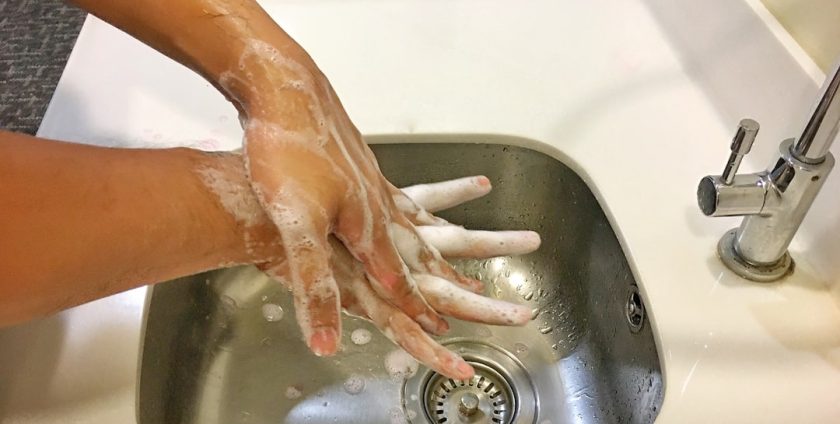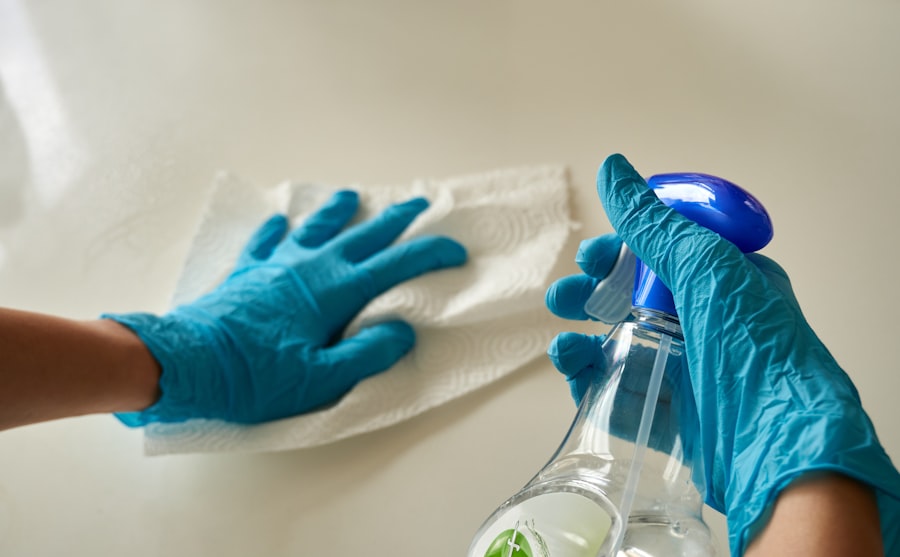
- By: admin
- Category: Commercial Floor Cleaning Machines
- 0 comment
In the realm of commercial and industrial cleaning, productivity is not merely a buzzword; it is a critical component that can significantly influence the overall success of a cleaning operation. For contract cleaners, building managers, and facility managers, understanding the importance of cleaning productivity can lead to enhanced service delivery, improved client satisfaction, and ultimately, increased profitability. A productive cleaning team can complete tasks more efficiently, allowing for a higher turnover of work and the ability to take on additional contracts without compromising quality.
Moreover, the impact of cleaning productivity extends beyond just the immediate financial benefits. A clean and well-maintained environment contributes to the health and safety of employees and visitors alike. In sectors such as healthcare, manufacturing, and hospitality, where hygiene standards are paramount, the role of an efficient cleaning process cannot be overstated.
By prioritising productivity in cleaning operations, organisations can ensure compliance with industry regulations while fostering a positive atmosphere that enhances employee morale and productivity. Please feel free to get in touch with us through our Contact Us page for any inquiries or assistance.
Summary
- Understanding the importance of cleaning productivity is essential for maintaining a clean and healthy environment.
- Streamlining your cleaning process can help save time and effort, leading to increased productivity.
- Choosing the right cleaning products is crucial for achieving effective and efficient cleaning results.
- Implementing time-saving techniques can help maximise productivity and reduce cleaning time.
- Maximising efficiency with multi-purpose products can simplify the cleaning process and save money.
Streamlining Your Cleaning Process
To achieve optimal cleaning productivity, it is essential to streamline your cleaning processes. This involves evaluating current practices and identifying areas where efficiency can be improved. For instance, consider implementing a systematic approach to cleaning that follows a logical sequence.
By establishing a clear workflow—such as starting from the top of a room and working downwards—cleaners can avoid unnecessary backtracking and ensure that no area is overlooked. Additionally, training staff on best practices can significantly enhance productivity. Regular training sessions can equip cleaners with the skills needed to use equipment effectively and apply cleaning products correctly.
For example, a well-trained team will know how to operate floor scrubbers efficiently, reducing the time spent on manual scrubbing. Furthermore, encouraging open communication among team members can lead to the sharing of tips and techniques that can further streamline processes.
Choosing the Right Cleaning Products

Selecting the appropriate cleaning products is another vital aspect of enhancing productivity in commercial and industrial cleaning. The right products not only improve cleaning efficiency but also ensure that surfaces are treated effectively without causing damage. For instance, using a high-quality disinfectant that is suitable for various surfaces can save time by reducing the need for multiple products.
It is also essential to consider the environmental impact of cleaning products. Many organisations are now opting for eco-friendly solutions that not only meet regulatory standards but also appeal to clients who prioritise sustainability. By choosing biodegradable or non-toxic products, cleaning companies can enhance their reputation while contributing to a healthier workplace.
Moreover, investing in concentrated cleaning solutions can reduce storage space and transportation costs, further streamlining operations.
Implementing Time-Saving Techniques
Time-saving techniques are crucial for improving productivity in cleaning operations. One effective method is to adopt the ‘cleaning in place’ strategy, which involves keeping all necessary tools and supplies within easy reach during cleaning tasks. This approach minimises downtime spent retrieving equipment or products, allowing cleaners to focus on their work.
Another technique is to implement a zone cleaning system, where specific areas are assigned to individual team members. This not only fosters accountability but also allows cleaners to become specialists in their designated zones, leading to faster and more thorough cleaning. For example, in a large office building, assigning one cleaner to handle all restrooms while another focuses on common areas can lead to quicker turnaround times without sacrificing quality.
Maximising Efficiency with Multi-Purpose Products
In an industry where time is money, maximising efficiency through the use of multi-purpose products can be a game changer. These versatile solutions allow cleaners to tackle various surfaces and types of dirt with a single product, reducing the need for multiple items in their cleaning arsenal. For instance, a multi-surface cleaner that effectively removes grease, grime, and disinfects can streamline the cleaning process in kitchens or industrial settings.
Furthermore, using multi-purpose products can simplify training for new staff members. With fewer products to learn about, new cleaners can quickly become proficient in their roles, leading to faster onboarding and increased overall productivity. This approach not only saves time but also reduces costs associated with purchasing and storing multiple specialised products.
Organising Your Cleaning Schedule

An organised cleaning schedule is fundamental to maintaining high levels of productivity within any cleaning operation. A well-structured schedule ensures that all areas receive appropriate attention while allowing for flexibility in response to unexpected demands or changes in workload. For instance, implementing a rotating schedule for deep cleaning tasks can help maintain cleanliness without overwhelming staff during peak operational hours.
Moreover, incorporating feedback from team members into the scheduling process can lead to improved efficiency. Cleaners often have valuable insights into which tasks take longer than expected or which areas require more frequent attention. By involving them in the planning process, managers can create a more realistic schedule that optimises productivity while ensuring that all cleaning needs are met.
Utilising Technology to Boost Productivity
In today’s fast-paced world, technology plays an increasingly vital role in enhancing productivity within commercial and industrial cleaning operations. From advanced cleaning equipment equipped with smart technology to software solutions that streamline scheduling and communication, embracing technological advancements can lead to significant improvements in efficiency. For example, robotic floor cleaners are becoming more prevalent in large facilities such as warehouses and shopping centres.
These machines can operate autonomously, allowing human cleaners to focus on more complex tasks that require a personal touch. Additionally, using mobile apps for task management enables real-time updates and communication among team members, ensuring that everyone is on the same page regarding priorities and progress.
Maintaining a Clean and Productive Environment
Ultimately, maintaining a clean and productive environment is the culmination of all these strategies working in harmony. A clean workspace not only enhances employee morale but also reduces absenteeism due to illness—a crucial factor in maintaining productivity levels across any organisation. Regular inspections and audits can help ensure that cleanliness standards are upheld consistently.
Furthermore, fostering a culture of cleanliness within an organisation encourages everyone to take responsibility for their environment. When employees understand the importance of maintaining cleanliness and are involved in the process—whether through training or feedback—they are more likely to contribute positively to the overall cleanliness of their workplace. In conclusion, enhancing productivity within commercial and industrial cleaning operations requires a multifaceted approach that encompasses streamlining processes, selecting appropriate products, implementing time-saving techniques, and leveraging technology.
By prioritising these elements, contract cleaners and facility managers can create an efficient and effective cleaning operation that not only meets but exceeds client expectations. **FAQs** 1. **What are some key benefits of improving cleaning productivity?**
Improving cleaning productivity leads to enhanced service delivery, increased client satisfaction, reduced operational costs, and a healthier environment for employees and visitors.
2. **How can I train my staff effectively on new cleaning techniques?**
Regular training sessions that include hands-on demonstrations and opportunities for staff to practice new techniques can be highly effective. Encouraging open dialogue about challenges faced during cleaning tasks also fosters continuous learning.
3. **What types of technology should I consider for my cleaning operation?**
Consider investing in robotic cleaners for large spaces, mobile task management apps for scheduling and communication, and advanced equipment with smart technology features that enhance efficiency. 4.
**How often should I review my cleaning schedule?**
It is advisable to review your cleaning schedule regularly—at least quarterly—to ensure it remains effective and responsive to changing needs within your facility. 5. **What role do multi-purpose products play in enhancing productivity?**
Multi-purpose products simplify the cleaning process by allowing cleaners to use one product for various tasks, reducing time spent switching between different items while also cutting down on storage needs.
FAQs
What are some tips for revolutionising cleaning productivity?
Some tips for revolutionising cleaning productivity include decluttering and organising the space, using efficient cleaning products and tools, creating a cleaning schedule, and implementing time-saving techniques such as multitasking.
How can efficient cleaning products help achieve more with less?
Efficient cleaning products can help achieve more with less by providing powerful cleaning performance, requiring less product usage, and reducing the need for repetitive cleaning tasks. This can result in time and cost savings while maintaining high cleaning standards.
What are some time-saving techniques for cleaning?
Some time-saving techniques for cleaning include using multipurpose cleaning products, working in an organised and systematic manner, delegating tasks when possible, and using time-saving tools such as microfibre cloths and high-quality vacuum cleaners.
How can a cleaning schedule improve productivity?
A cleaning schedule can improve productivity by providing a structured approach to cleaning tasks, ensuring that all areas are regularly maintained, and allowing for efficient allocation of time and resources. It also helps in prioritising tasks and avoiding last-minute rushes.
What are some examples of efficient cleaning products?
Examples of efficient cleaning products include concentrated cleaning solutions, microfibre cleaning cloths, steam cleaners, and eco-friendly cleaning products that are designed to deliver effective cleaning performance with minimal product usage.
